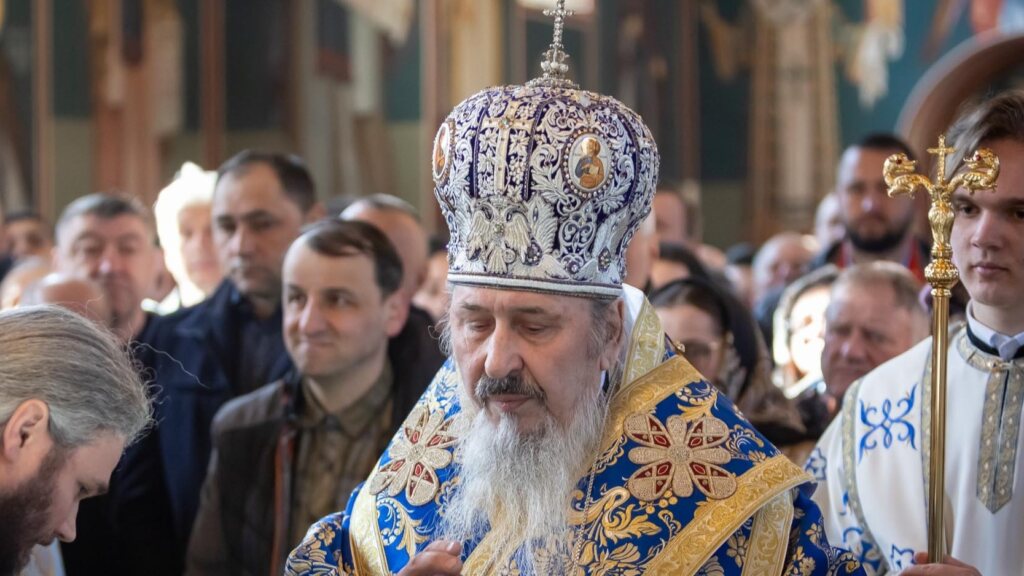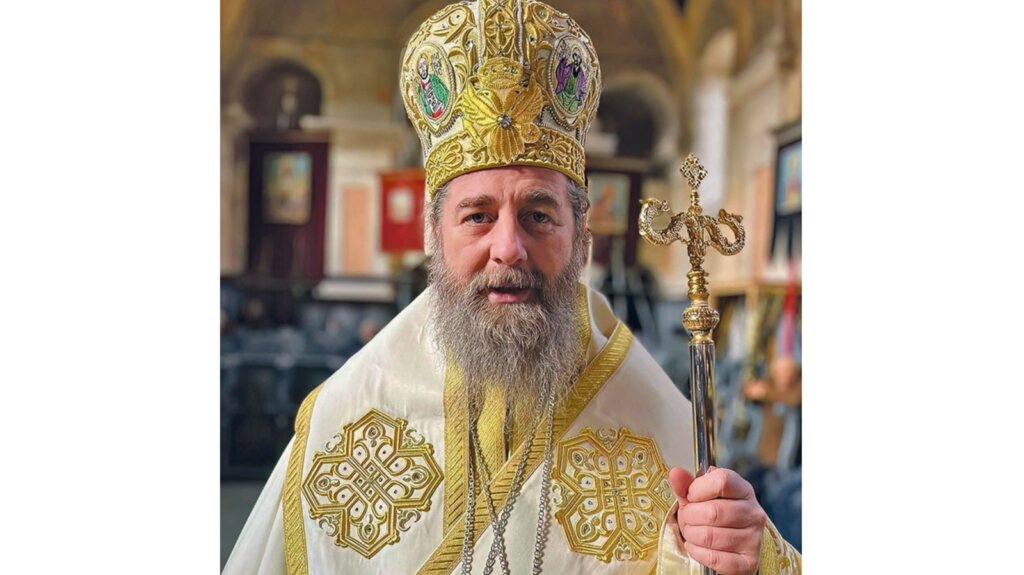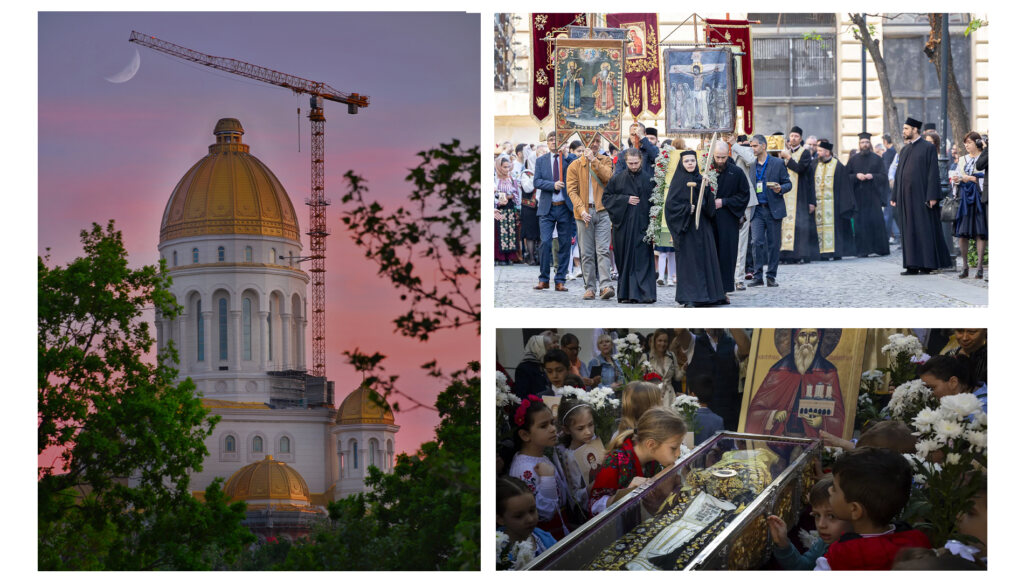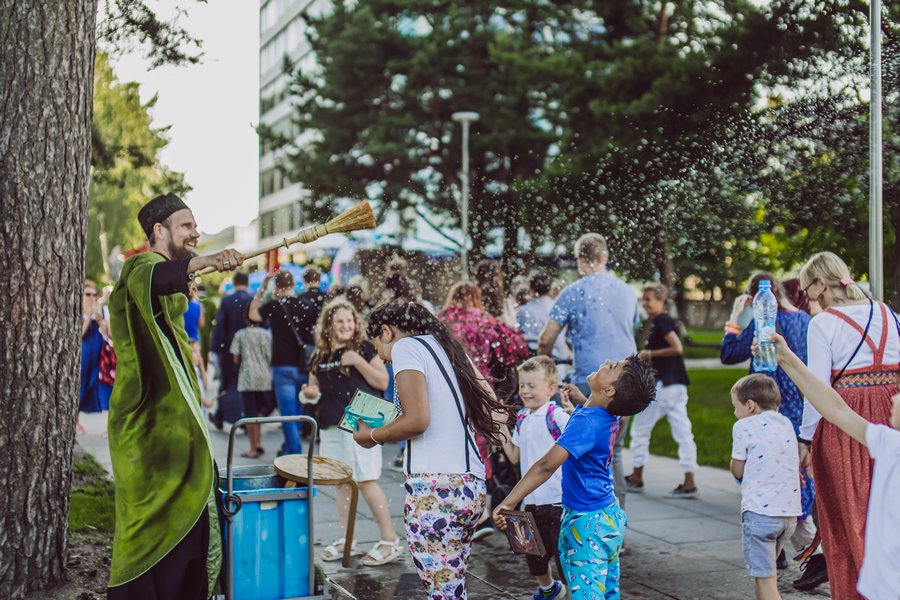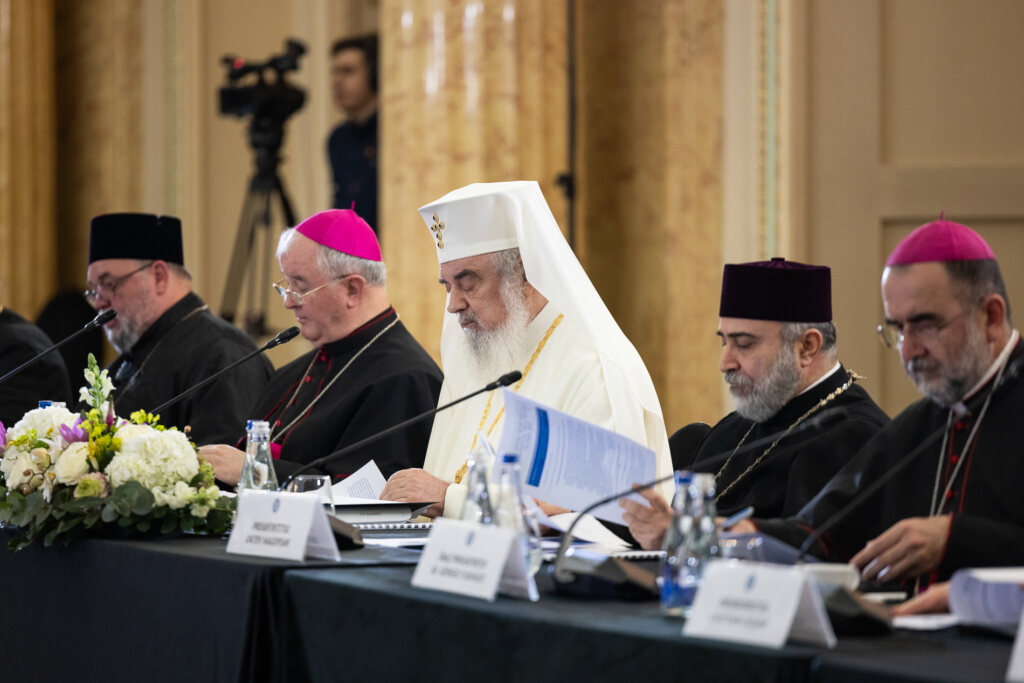Holy & Righteous Ancestors of God, Joachim and Anna
Saint Joachim, the son of Barpathir, was of the tribe of Judah, and was a descendant of King David, to whom God had revealed that the Savior of the world would be born from his seed. Saint Anna was the daughter of Matthan the priest, who was of the tribe of Levi. Saint Anna’s family came from Bethlehem.
The couple lived at Nazareth in Galilee. They were childless into their old age and all their life they grieved over this. They had to endure derision and scorn, since at that time childlessness was considered a disgrace. They never grumbled, but fervently prayed to God, humbly trusting in Him.
Once, during a great feast, the gifts which Joachim took to Jerusalem as an offering to God were not accepted by the priest Reuben, who considered that a childless man was not worthy to offer sacrifice to God. This pained the old man very much, and he, regarding himself the most sinful of people, decided not to return home, but to settle in solitude in a desolate place.
When Saint Anna learned what humiliation her husband had endured, she sorrowfully entreated God with prayer and fasting to grant her a child. In his desolate solitude the righteous Joachim also asked God for this. The prayer of the saintly couple was heard. An angel told them that a daughter would be born to them, Who would be blessed above all other women.
He also told them that She would remain a virgin, would be dedicated to the Lord and live in the Temple, and would give birth to the Savior. Obeying the instructions of the heavenly messenger, Saints Joachim and Anna met at the Golden Gate in Jerusalem. Then, as God promised, a daughter was born to them and they named her Mary.
Saint Joachim died a few years later at the age of 80, after his daughter went to live in the Temple. Saint Anna died at the age of 70, two years after her husband.
Saints Joachim and Anna are often invoked by couples trying to have children.
Troparion — Tone 1
Since you were righteous under the law of grace, O Joachim and Anna, / you gave birth to the God-given infant for our sake. / Therefore, the divine Church radiantly keeps feast today, / joyfully celebrating your honorable memory and giving glory to God / who has raised up a horn of salvation from the house of David.
Venerable Kyriakos of Tazlău

Ven. Kyriakos was born at the beginning of the 17th century to a family of religious people in Mesteacăn village, region of Neamţ. His parents used to take him to religious services at Tazlău Monastery ever since he was a child, so that he felt that his soul is “exalted by the divine longing”. He received his parents’ blessing and joined the community of this monastery from his youth. He became used to the monastic life and then was tonsured into monasticism.
There he proved much love and spiritual aspiration, having been a special observer of obedience in self-denial, praying permanently and fasting extensively. Soon, without his own accord, he was ordained deacon and then priest, having become a good spiritual adviser of other people.
His desire to live a harder life made him retire into a cave at Măgura Tazlaului, where he kept vigil all night, overcoming great cold and devilish temptations. Having acquired the gift of pure prayer, of healing the diseases and of casting out the demons, crowds of monks and faithful always wanted to seek for him. The pious monk was always also defender and confessor of the true faith, keeping the flame of Orthodoxy burning in all the region of Neamţ.
He climbed the steps of holiness in quite a short time and was very useful to all the others through his renowned living, through his prayers and advice, since he was blessed by God with the gift of thoughts discernment and could perform miracles during his lifetime.
He passed away about 1660 and was buried in the church porch of Tazlău Monastery.
The people considered him saint ever since his lifetime, a fact also confirmed by Saint Hierarch Dosoftei, metropolitan of Moldavia, who knew him and who venerated his holy relics, writing: “I lived at the time of outstanding fathers who had great humbleness: father Kyriakos from Bisericani and Kyriakos from Tazlău”.
In the Paterikon of the Romanian-Moldavian Saints, of 1888, it is written: “It was also at this time that pious father Kyriakos from Tazlău Skete lived in hermitage, fought against the invisible enemies and perfectly defeated them”.
One proof of his holy wonderful life is that after death, when his body was unburied, it was found unaltered. Monks and faithful from everywhere come to his grave to pray with great faith and hope.
On 6 March 2008, the Romanian Orthodox Church placed him among the saints, being celebrated on 9 September.
Through his holy prayers, Lord Jesus Christ, our God, have mercy on us. Amen.
Troparion – Tone 1
Glowed by the love of Christ, you have lived in the cave of the Hill of Tazlău, glorifying God and overcoming demons. Therefore, we faithfully praise you, oh, Venerable Kyriakos, our Father!
Venerable Onuphrius of Vorona

Venerable Onuphrius of Vorona was born around year 1700 to a noble family from Russia and became the governor of the region.
He left all the worldly riches and honour and came to live an ascetic life in Moldavia, around year 1749. The region was famous for its holy men living in wilderness.
His spiritual advisor was Elder Paisios, a famous monk who re-established monastic life on new bases in Moldavia.
In year 1764, Venerable Onuphrius joined the Sihăstria Vorona Skete and lived for 25 years in a cave near the Vorona River.
He would eat once a day after sunset and keep vigil at night. He received the Great Schema from Elder Paisios in 1774.
He would practice the Jesus Prayer and was very much sought after by the faithful and the monks for spiritual advice.
When he was about to repose in the Lord, an angel appeared to a near-by priest and led him with the Holy Communion to the cave of the saint.
He asked to be taken to the skete, where he gave his soul into the Lord’s hands three days later and was buried under an apple tree.
In the winter of 1846, while hunting, Prince Mihail Sturza (1834-1849) found a big and beautiful fruit at the root of the apple tree which guarded over the saint’s tomb. He gave it to his epilepsy-stricken daughter and the girl was cured.
Then the prince asked to holy relics to be unearthed and put into a reliquary for veneration at the Vorona Monastery.
Ten years later, the saint showed himself in a dream to the abbot and asked him to take him back to the Sihăstria Voronei Skete, where his holy relics lye to this day.
He was canonized by the Holy Synod of the Romanian Orthodox Church in 2005 and he continues to perform miracles.
Troparion – Tone 4
Living in prayer and silence, you have ascended the ladder of holiness, Venerable Father Onuphrius. You were revealed an image of humility and you became a good counsellor for all through the example of your life. For loving God more, you renounced the worldly things and dwelled in the wilderness. Pray to the Lord for our souls!
The Holy Fathers of the Third Ecumenical Council

Two hundred bishops attended the Council in the city of Ephesus. Nestorius also arrived in Ephesus, but he did not appear at the Council even though the Fathers suggested three times that he attend the sessions. Then the Fathers began to discuss the heresy in the absence of the heretic.
The sessions of the Council continued from June 22 to August 31, 431. At the Council of Ephesus were present such famous Fathers of the Church as Saint Cyril of Alexandria, Juvenal of Jerusalem, Memnon of Ephesus (Saint Celestine, Pope of Rome, was unable to attend because of illness, but he sent papal legates).
The Third Ecumenical Council condemned the heresy of Nestorius and confirmed the Orthodox teaching on these matters: that it is necessary to confess the Lord Jesus Christ as One Person (Hypostasis) in two natures, the Divine and the Human, and that the All-Pure Mother of the Lord be acclaimed as Ever-Virgin and truly the Theotokos. In the guidance of the Church the holy Fathers issued eight Canons, and the “Twelve Anathemas against Nestorius” by Saint Cyril of Alexandria.
Tr by oca.org


